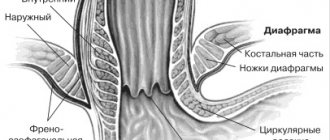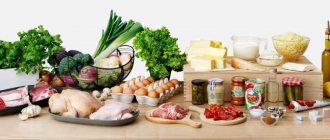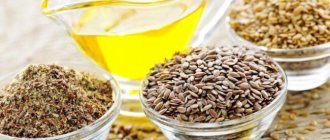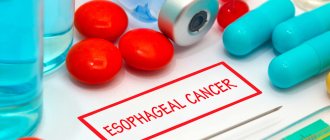Share information with your Facebook friends
VK
According to the definition adopted at the Montreal Consensus, GERD is understood as a condition that develops when the reflux of stomach contents into the esophagus causes certain clinical symptoms and complications. One of the main causes of gastric acid reflux is transient, i.e. temporary, relaxation of the lower esophageal sphincter. Various factors affecting the relaxation of the lower esophageal sphincter can increase or decrease reflux, i.e. influence the appearance or disappearance of heartburn and belching. A person’s body weight and pressure inside the abdominal cavity also play a huge role in the formation of this disease. Based on these data, American scientists have proposed, taking into account evidence-based medicine, that lifestyle with GERD needs correction (being in an elevated and vertical position, diet, body weight) and is useful for relieving the symptoms of GERD. But with two caveats:
- firstly, it is necessary to change lifestyle with GERD, taking into account the individuality of patients;
- Secondly, these recommendations for lifestyle changes for GERD, individually and in combination, are an addition to drug treatment.
Is it possible to smoke if you have GERD?
Chronic smokers (from 15 to 60 cigarettes per day) showed a decrease in pressure in the lower esophageal sphincter, which caused them to complain of heartburn; they also had a lower pH of gastric juice (i.e., a more acidic environment), a decrease in bicarbonate in saliva, which neutralizes acid during reflux (this is why with heartburn the patient often swallows saliva). Additionally, the esophagus is cleared of acid that entered during reflux by coughing and taking a deep breath, and by clearance (the mechanism of increased peristalsis of the esophagus).
Many studies confirm relief and disappearance of reflux symptoms after quitting tobacco smoking. This relationship is especially pronounced in individuals with normal body weight.
Nutrition for reflux esophagitis
In addition to sports activities for reflux esophagitis, it is extremely important to organize proper nutrition. It should be fractional, portions should be small, and the food should undergo special heat treatment. Why is this necessary?
With reflux esophagitis (especially during the acute period), it is not easy for the human body to perform some basic functions, such as digesting food entering the stomach. If you continue to eat fatty borscht, goulash and fried potatoes, generously pouring ketchup and chili on it, complete digestion will not happen, and you will pay for such neglect of your health with heartburn, heaviness and stomach pain.
Small portion sizes allow food to be processed faster and easier.
Preference should be given to food that is steamed, stewed, baked or simply boiled in water. It is digested much faster, without irritating the inflamed mucous membrane of the esophagus.
Take your time! Food won’t run away from your plate, you’re not in the Stone Age! Eat calmly, admiring the scenery outside the window and thinking about something pleasant. Positive emotions contribute to the normalization of the gastrointestinal tract no less than medications.
Is it possible to gain weight with GERD?
Obesity is a well-known risk factor, including acid reflux. The intensity of symptoms is directly proportional to the increase in body weight.
Researchers provide interesting data regarding reflux during surgical treatment of morbid obesity. It has been noted that bariatric surgery (surgical treatment of excess weight) does not always reduce reflux symptoms, such as with vertical gastroplasty and gastric banding. And with Roux-en-Y gastric bypass, a decrease in GERD symptoms was noted in all patients.
The recommendation for weight loss in patients with any degree of obesity in the presence of reflux symptoms is the only one regarding lifestyle changes for GERD with high reliability.
Based on research to date, weight loss likely improves GERD, leading to a reduction in symptoms in overweight and obese individuals, regardless of whether weight loss is achieved conservatively or through bariatric surgery.
Reviews
Dear readers, your opinion is very important to us - therefore, we will be glad to receive feedback on breathing exercises for reflux esophagitis in the comments, this will also be useful to other users of the site.
Yana, Vitebsk
“Strelnikova’s gymnastics helps me very well with manifestations of reflux esophagitis. A few full-fledged exercises are enough to forget about unpleasant sensations for at least half a month.”
Lydia, Sevastopol
“While in the hospital for GERD, I began doing breathing exercises with my stomach - holding my chest with my palm, inhaling slowly, then holding my breath and exhaling even more slowly, drawing my stomach in deeply. It turned out to be a kind of massage of the internal organs. I started with literally two times (I couldn’t do it anymore because of the weight), and by the time I was discharged I could do more than twenty in one go. She continued her studies at home. The heartburn and pain became incomparably weaker, but that’s not all: after a month I discovered that I began to lose weight. Naturally, after that I began to study with tripled enthusiasm! Six months later, I lost 11 kilograms, and the reflux disappeared on its own - I couldn’t stand the test of joy.”
Is it possible to raise the head of the bed if you have GERD?
Lying down increases the exposure of the esophageal lining to stomach acid, which is associated with worsening GERD symptoms.
Raising the head of the bed using bolsters or installing wedges or timber under the legs of the bed by 15-20 cm leads to a reduction in GERD symptoms due to improved esophageal clearance (peristalsis). But this recommendation is considered impractical and unacceptable by patients in everyday life, or is not followed by them.
What else to read:
- Symptoms of achalasia cardia and how such a disease is treated Contents of the article:1 Causes of achalasia2 Stages of the disease3 Signs of pathology4 Pain during achalasia5 How the disease is diagnosed6 How the disease is treated6.1 Drugs7 Prevention of the disease Achalasia cardia is otherwise called cardiotonic dilatation of the esophagus,......
- Esophageal ulcer: symptoms and treatment with drugs Contents of the article:1 Types of disease2 Subtypes of disease3 Causes of the disease3.1 Peptic ulcer3.2 Symptomatic ulcer4 Signs of an ulcer5 Stages of the disease5.1 First classification5.2 Second classification5.3 Forms of ulcers6 Diagnosis7 Treatment7.1 Proper nutrition7. 2……
- Causes, symptoms and treatment of diaphragmatic hernia Contents of the article:1 What is a hiatal hernia2 What causes pathology3 Types and symptoms of hiatal hernia4 Diagnostic methods5 How dangerous is hiatal hernia6 How to get rid of pathology6.1 Conservative therapy6.2 Traditional......
Is it possible to do breathing exercises with GERD?
Singers, especially opera singers, who practice deep breathing techniques may have better protection against GERD symptoms. This is due to the fact that during inhalation, the diaphragm contracts as the chest expands (abdominal breathing). In this case, the legs of the diaphragm, which encircle the esophagus at the diaphragmatic opening of the diaphragm, together with the lower esophageal sphincter, contribute to the activation of the protective mechanism against reflux. This is very clearly visible during retroversion gastroscopy, when the patient is asked to take a deep breath, a tighter compression and clasping of the esophageal diaphragm by the legs occurs.
Gymnastics is based on the transition from the usual thoracic type of breathing movements to the abdominal one. Treatment for belching is also based on this.
Basic exercises for reflux esophagitis
When treating reflux esophagitis, special physical exercises are often prescribed, which should be combined with breathing exercises. This is the so-called aerobic training.
Typically this is not vigorous running or walking outdoors.
You should not eat before these exercises, as they relax the muscular system, so it is best to exercise in the morning, thereby preparing the body for food intake.
If you have been advised to engage in recreational walking, you should do it for one hour. Instead of regular walking, if the patient’s health allows, Scandinavian walking with ski poles is sometimes prescribed. At the same time, the load on the body increases significantly.
If your doctor has prescribed you to run, then you should do it for twenty minutes. It is not necessary to run fast; a light jog is enough.
In addition, you can additionally ride a bike and swim. It also improves abdominal tone.
While performing the exercises, try to avoid sudden bending of the body and strength exercises. If you experience heartburn during exercise, you should immediately stop exercising and reduce your load in the future.
Is it possible to go on specialized diets for GERD?
Dietary restrictions have little effect on relieving GERD symptoms. In some cases, a number of dietary considerations may be recommended.
Some studies have shown that coffee causes the lower esophageal sphincter to relax, increasing the incidence of GERD symptoms. Drinking decaffeinated coffee significantly reduces the incidence of reflux. Fun fact: Drinking decaffeinated tea or adding caffeine to plain water had no effect on GERD symptoms. This supports the idea that some components of coffee other than caffeine may cause GERD symptoms. However, coffee does not increase the production of hydrochloric acid after eating. But it was noted that drinking coffee on an empty stomach increased the frequency of reflux. This suggests that patients with GERD may benefit and should be advised to avoid drinking coffee on an empty stomach.
Fried foods and dishes with a lot of spices, mint tea, carbonated drinks can also cause symptoms of GERD and are reliable sources of heartburn at night...
Not only the nature and type of food, but also the timing and volume of each meal can lead to the appearance of GERD symptoms.
Swimming for reflux esophagitis
There is one simple way to improve abdominal tone: swimming. Many doctors recommend this sport to quickly recover from reflux esophagitis.
Why is swimming so beneficial? Precisely because, due to the difference in environmental pressure (and water, as you know, is much denser than air and, accordingly, presses harder), all the muscles of the abdominal cavity tense, trying to balance the environmental pressure with the pressure inside the body. This is the tonic property of swimming. With good muscle tone, it will be easier for you to fight the symptoms of reflux and recovery will go much faster.
However, you should remember that you are still unwell and you could feel ill at any moment. It is best to practice swimming in a shallow pool, which is guarded by a lifeguard team. If you feel yourself starting to lose consciousness or choke on vomit, try to relax so you can stay afloat. Signal to the rescuers to help you out of the water.
Can you drink alcohol if you have GERD?
Experiments have clearly demonstrated that alcohol directly inhibits the contractile function of the esophagus and leads to a decrease in pressure in the lower esophageal sphincter.
Here's some interesting data: alcohol with an alcohol concentration of less than 5% may stimulate gastric acid production, while drinks with higher alcohol concentrations (5-40%) have no proven stimulating effect and may actually suppress stomach acid production. With chronic alcohol consumption, this effect is no longer unpredictable.
Overall, there is conflicting and inconsistent evidence regarding the role of alcohol in the progression of GERD symptoms and the effect of abstinence from alcoholic beverages on disease relief. Attention should be paid to excessive alcohol consumption in patients, and then for reasons of general health, and not as a prevention or treatment for GERD.
Causes and symptoms of cardia failure
Before understanding the features of treatment, I would like to pay special attention to what are the causes and symptoms of esophageal cardia insufficiency. The main factor is poor nutrition; we should also not forget about drinking carbonated drinks in significant quantities, strong tea, alcoholic beverages and coffee. Other no less significant provoking factors should be considered a passive lifestyle (especially physically), excessive body weight, and other stomach diseases - gastritis, ulcerative lesions. The next reason for the need for exercise in case of insufficiency of the esophageal cardia, experts call increased pressure levels inside the peritoneum.
The symptoms of this pathological condition should be given much more attention, because this list includes constantly recurring heartburn.
Its characteristic feature is its formation regardless of the sessions of eating food. Other symptoms of the disease include:
- a burning sensation behind the sternum and a constant feeling of fullness in the stomach;
- periodic belching of air;
- rumbling and gurgling in the intestinal area;
- painful sensations in the abdominal area that are “vague” in nature. They do not have any clear localization;
- worsening appetite and even apathy.
Additional symptoms indicating that it is necessary to begin treatment are decreased ability to work and general fatigue. The objectives of exercise therapy, the peculiarities of its implementation and breathing exercises deserve special attention.
Motility of the esophagus in gastroesophageal reflux disease
00:00
Oksana Mikhailovna Drapkina , Doctor of Medical Sciences, Professor:
— I’ll take the liberty of announcing, probably already, Alexander Sergeevich, your lecture. Professor Trukhmanov Alexander Sergeevich.
"Motility of the esophagus in gastroesophageal reflux disease."
Alexander Sergeevich Trukhmanov , Doctor of Medical Sciences, Professor:
— Thank you very much, Oksana Mikhailovna.
I am very pleased that we continue to consider issues of the physiology of digestion. In particular, we pay our attention to the motor function of the esophagus and stomach. Elena Ivanovna’s brilliant lecture spoke about impaired motor function of the biliary tract. At the end of our online session today we will talk about intestinal motor function.
Of course, this indicates that the opportunities that have recently appeared to us have given us a real chance to evaluate those subtle links in the pathogenesis that lead to the occurrence of most of the symptoms of patients who turn to a gastroenterologist. My message today is dedicated precisely to the new opportunities that have appeared in our practice for assessing disorders of the motor function of the esophagus in patients with gastroesophageal reflux disease.
(Slide show).
Allow me to demonstrate to you those provisions that are currently no longer subject to discussion about the need to study the motor function of the esophagus. In particular, in patients with gastroesophageal reflux disease. Including using such an amazing, I’m not afraid of this word, technique, like the HRM technique (High-resolution manometry - high-resolution monometry).
Why do we conduct a study of the motor function of the esophagus in patients with gastroesophageal reflux disease? First of all, to assess the function of the lower esophageal sphincter, the degree of pressure reduction in the lower esophageal sphincter, and assess the peristaltic activity of the thoracic esophagus. This, by the way, is extremely important to resolve the issue of treatment tactics for patients in cases of resistance to drug therapy.
Examination of the motor function of the esophagus, esophageal motility, is an auxiliary method for assessing the position of the pH probe. In patients with this disease, this study (I mean pH-metry) is absolutely necessary in assessing the effectiveness of the therapy and deciding on further treatment.
02:40
(Slide show).
I remind dear listeners of those basic indicators of esophageal peristalsis that we have known for a long time, from the institute course. Esophageal peristalsis is divided into primary and secondary.
The primary is initiated by a gulp. It is modeled by the activity of the vagus nerve, spreading at a speed of 2-4 cm/s along the (inaudible, 03:08) esophagus, showing different amplitudes in the upper, middle and third parts over 8-12 seconds.
These indicators are standard. They can, of course, vary from technique to technique. However, when we evaluate, in particular, the peristalsis of the thoracic esophagus and its function such as esophageal clearance (which I will talk about later), these indicators are extremely important to take into account.
We also need to understand that the esophagus can generate its own peristalsis without the initiating influence of the vagus nerve. Due to the automaticity of the intramural nerve ganglia, the smooth muscle cells of the esophagus contract in response to the occurrence of reflux.
Secondary peristalsis is the basis for esophageal clearance in patients with gastroesophageal reflux disease. It is she who is being violated, and it is she who we must help if we have such a task.
Notice the pressure in the upper and lower esophageal sphincter. This pressure is very high. I emphasize this in order to further understand how the esophagus is normally a reliable organ that prevents the reverse flow of swallowed food.
Of course, nature has created such a mechanism. The body expends an enormous amount of energy to find food and absorb it. Naturally, there must be a similar mechanism that prevents reflux.
04:50
(Slide show).
How we see this peristalsis, in particular the peristalsis of the thoracic esophagus. When performing “regular” monometry. I mean, this is not high-resolution monometry, but monometry that uses Russian-made instruments.
You can be sure that when carrying out this research method, we can also see the main indicators that are characteristic of esophageal peristalsis. The esophageal wave has a gradient, that is, it is peristaltic. We can measure the amplitude of contractions, the duration of contractions and verify certain violations of this function.
(Slide show).
This is what we can see when using a high resolution monometry system. In particular, MMS systems made in the Netherlands. Notice how colorfully we can see the high pressure of the upper esophageal sphincter. It is depicted here in colors from yellow to red.
We can see how the upper esophageal sphincter opens, allowing food to pass through it - the blue area. Then, from left to right, from top to bottom, the peristaltic wave, creating a fairly high pressure, moves along the axis of the esophagus and approaches the lower esophageal sphincter - this is the lower green line. By the time peristalsis approaches the lower esophageal sphincter, it opens, allowing the bolus to enter the stomach.
On the right of this slide you see the same thing in the image we are used to. What makes it different is that this method has a lot of channels. This makes it possible to further convert the signal into a high-resolution system.
Naturally, such opportunities that the high-resolution monometry registration system gives us are extremely useful. They generally change our ideas, our capabilities and our potential in correcting movement disorders.
(Slide show).
I want to draw your special attention to such a function of the esophagus as clearance. I have already said that it is carried out due to peristalsis. At the moment a bolus enters the lumen of the esophagus.
You see on the top graph it shows the volume of the bolus, the acid bolus, that is injected into the lumen of the esophagus. This (in the second graph) correlates with a decrease in esophageal pH below 4.0.
When recording pressure in the esophagus, we see how, in response to acid entering the thoracic region, a contraction of the thoracic region immediately appears, which quickly eliminates this acid reflux within 3 minutes. The pH rises again to its original values.
Accordingly, we can imagine what will happen if this secondary peristalsis is impaired, if the clearance of the esophagus is impaired. This is especially clearly demonstrated by patients with systemic scleroderma. In them, severe reflux esophagitis occurs precisely because, due to degeneration of muscle tissue, the esophagus becomes unable to contract.
08:16
(Slide show).
Our study, which we conducted together with Dr. Olga Andreevna Storonova, demonstrated that indeed in patients with gastroesophageal reflux disease (you can see in the second graph) after acid reflux, clearance is slower than normal. It is shown in the top graph.
If the norm is 3-4 minutes, then in a patient with gastroesophageal reflux disease it can be increased by 2 or even 3 times. Therefore, we should work on the prospects for drug correction of esophageal clearance.
By the way, there is such a possibility as the use of drugs that improve this clearance by simply absorbing hydrochloric acid. Here in the third graph is an example of how the drug “Smecta” affects clearance.
(Slide show).
Normally, the lower esophageal sphincter, which is, of course, a key link in the development of gastroesophageal reflux disease, exhibits a pressure of 10 to 40 mm Hg. Art. 10 mmHg Art. is the lower limit. If it is not exceeded, then due to the pressure gradient between the abdominal cavity and the chest, it makes it possible for reflux as such to occur.
(Slide show).
Even if the lower esophageal sphincter demonstrates normal resting pressure (with distension of the stomach, with increased intra-abdominal pressure), so-called intermittent relaxations of the lower esophageal sphincter occur. This is a natural physiological mechanism for emptying the stomach of swallowed air.
Of course, with every sip we place, so to speak, a certain volume of air into the stomach. After the pressure in the stomach increases, the lower esophageal sphincter reflexively relaxes, freeing the stomach from this air.
10:23
(Slide show).
The incoming relaxation of the lower esophageal sphincter on monometry is visible in the form of a flat “curve”, indicated on this slide by an arrow. You see the pressure in the lower esophageal sphincter drop to zero.
(Slide show).
If these are physiological refluxes, this does not lead to gastroesophageal reflux disease. If they are pathological, then this is the basis for the development of this disease.
What mechanisms model the activity of the lower esophageal sphincter, in particular the incoming relaxation. These are nitric oxide and cholecystokinin. These elegant studies compared the effect on the amount of relaxation of the lower esophageal sphincter with a placebo of substances that inhibit (for example, N-arginine) the production of nitric oxide. It certainly reduces the amount of relaxation of the lower esophageal sphincter that occurs. Naturally, this mechanism of disease development (I mean the use of nitric oxide donors) must be taken into account.
(Slide show).
This is what I was talking about. In patients with a normal amount of relaxation of the lower esophageal sphincter, these physiological events do not lead to the development of reflux. In patients with gastroesophageal reflux disease, the amount of these relaxations is significantly higher.
(Slide show).
How can we influence this link in the pathogenesis of GERD? There is work known (we have already repeatedly demonstrated its results) that the gamma-aminobutyric acid agonist baclofen reduces the number of LES PRs and, accordingly, reduces the number of refluxes. In the experiment, he demonstrated his ability to correct these pathological changes.
However, this drug cannot be used in therapeutic practice due to its low therapeutic breadth and the development of side effects.
12:40
(Slide show).
Why does the patient have gastroesophageal reflux disease? Due to the fact that the patient has a violation of esophageal clearance. Due to the fact that the patient has an excessive amount of incoming relaxation of the lower esophageal sphincter. But first of all, because the patient can and does have an increase in pressure in the stomach, a slowdown in gastric emptying. In particular, due to increased intra-abdominal pressure, including due to the presence of abdominal obesity.
(Slide show).
Why does a patient with gastroesophageal reflux disease experience heartburn after eating? It would seem that the classic symptoms of duodenal ulcer weaken or disappear after eating. This is because, as we well know, food is the best antacid.
Indeed, the pH of the bolus of food in the stomach, in the area of the body of the stomach, increases significantly after eating. It reaches indicators above 4.0. At the same time, the so-called acid pocket remains in the cardia area. After eating, the pressure in the stomach increases, and hydrochloric acid from the gastric juice from this acidic pocket enters the esophagus, causing the symptoms and morphological changes characteristic of GERD.
Thus, we once again emphasize that increased intragastric pressure is an integral factor in the pathogenesis of gastroesophageal reflux disease.
(Slide show).
How can we register this factor. I mean reducing the resting pressure of the lower esophageal sphincter. During monometry, the left arrows show that the pressure of the lower esophageal sphincter in this patient is 6 mm Hg. Art. This is absolutely not enough to maintain the pressure gradient between the stomach and esophagus.
14:45
(Slide show).
When performing high-resolution monometry, this low pressure is characterized by a color change in the area of the second line. The black arrow at the bottom left shows that the pressure in the lower esophageal sphincter region is reduced. It is less than 10 mmHg. Art.
(Slide show).
What else can we see when performing monometry of the esophagus in these patients? First of all, we can see secondary, tertiary contractions and segmental spasm of the esophagus. Those same contractions that are partly physiological. These are the abbreviations in the right circle. We can see that without swallowing, peristalsis occurs to remove refluxate.
At the same time, this patient also has tertiary contractions - this is the left circle. You see that several peristaltic contractions occur in a row, which no longer have a physiological function.
When a contraction occurs that does not have a pressure gradient (this is an oval in the middle), we can talk about the presence of a segmental spasm.
(Slide show).
As can be seen with high resolution monometry. The pressure in the body of the esophagus (indicated by the arrow) is significantly increased. It reaches 130 mm Hg. Art., and its color shows red. This indicates a serious violation of esophageal peristalsis.
(Slide show).
Do we have the opportunity to correct motor disorders of the esophagus in patients with gastroesophageal reflux disease? A year ago in this same studio, when you and I, dear viewers, were talking about this topic, we hoped for the emergence of new drugs that could affect the incoming relaxation of the lower esophageal sphincter.
(Slide show).
I have to change this same slide. The fact is that these drugs that underwent clinical trials (new gamma-aminobutyric acid agonists and metabotropic glutamate receptor antagonists) were withdrawn from clinical trials due to the presence of a large number of side effects.
17:17
(Slide show).
What can we do now? I remind you once again that one of the pathogenesis factors (an extremely important pathogenesis factor) is impaired gastric emptying in patients with gastroesophageal reflux disease.
(Slide show).
If we conduct a scintigraphic study, we will be convinced that, indeed, gastric emptying in patients with gastroesophageal reflux disease from the substance that is analyzed in the gamma camera is significantly slowed down.
In a patient with normal evacuation (bottom row of illustration), the stomach empties over time. In contrast, in a patient with gastroesophageal reflux disease, gastric emptying is significantly slowed down.
What to do? What do we need to correct these movement disorders?
(Slide show).
Of course, we have effective medications in our arsenal. I am not talking about changing the lifestyle of patients now. This is obvious, this is the foundation of treatment for patients with gastroesophageal reflux disease. I am not talking now about prescribing antisecretory drugs - this is a separate topic.
I'm just saying that prescribing dopamine antagonists allows us to correct, first of all, impaired motor function of the stomach. Improve antroduodenal coordination, reduce pressure in the stomach and thus reduce the number of incoming relaxations of the lower esophageal sphincter.
19:03
(Slide show).
The well-known prokinetic agent Motilium, which we have known for a long time and has proven itself, works in exactly this way. We have been using this drug for a long time.
We ask ourselves the question: when and how to prescribe prokinetic drugs in the complex treatment of patients with gastroesophageal reflux disease. We answer this question exactly this way: when there are disturbances in gastric emptying, when we need to improve antroduodenal coordination.
(Slide show).
Thus, concluding my message, first of all, I want to draw your attention, dear colleagues, that now the study of motor function (including the esophagus) is entering a new stage, a new level. Including using new equipment.
Algorithms have been developed for analyzing the motor function of the esophagus, which make it possible to very strictly and accurately classify these disorders.
(Slide show).
If you ask me a question, where can this study be done, I will certainly answer that in our clinic. In the clinic of propaedeutics of internal diseases, gastroenterology and hepatology, headed by Academician of the Russian Academy of Medical Sciences, Professor Vladimir Trofimovich Ivashkin.
Here you see data that may very well interest you. If you want to refer patients for a study of the motor function of not only the esophagus, but also the intestines, if 24-hour pH-metry of the esophagus is necessary, you have a real opportunity to refer patients to our clinic.
Here, unfortunately, the telephone number you can call is not completely visible. I'll dictate it again. You can call directly to refer your patients to the tests they need.
Thank you very much for your attention.





